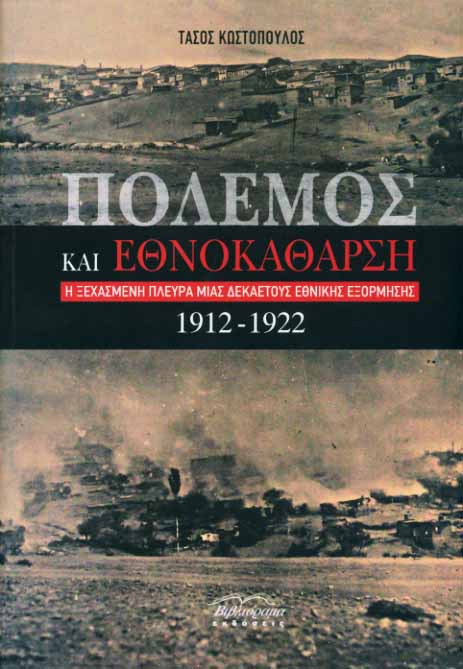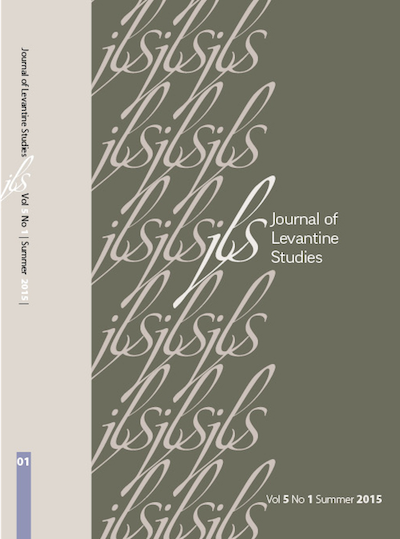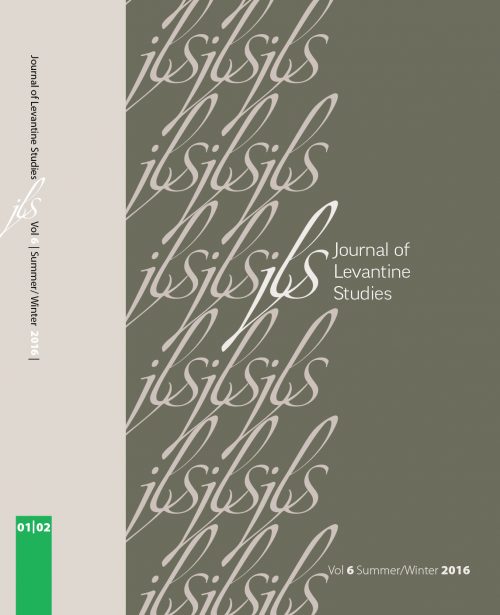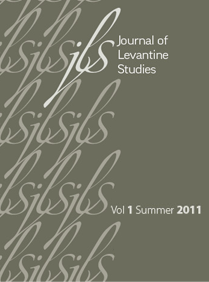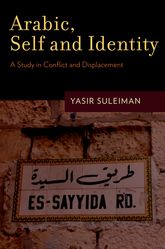-
Add to cartQuick view
Review Essay: Tormented By Politics
Free!Umut Özkırımlı, and Spyros A. Sofos,Tormented by History: Nationalism in Greece and Turkey (London: Hurst and Co., 2008), 219 pp.
Kostopoulos, Tasos, Πόλεμος και Εθνοκάθαρση: Η Ξεχασμένη Πλευράμιας Δεκαετούς Εθνικής Εξόρμησης, 1912-1922 [War and Ethnic Cleansing: The Forgotten Side of a Ten-Year National Surge, 1912-1922] (Athens: Vilviorama, 2007), 319 pp.
Add to cartQuick view -
 Add to cartQuick view
Add to cartQuick viewRoad, Map: Partition in Palestine from the Local to the Transnational
$5.00Add to cartQuick view -
Add to cartQuick view
The Assimilation of Spain’s Moriscos: Fiction or Reality?
The proponents of the expulsion of the Moriscos from Spain not only argued that the Moriscos, in the more than one hundred years that had elapsed since their conversion, had not assimilated to the majority Castilian Catholic culture, but that they were incapable of doing so. As a result, the expulsion was both inevitable and necessary. This view has dominated studies on the Moriscos since their expulsion four hundred years ago. In this article I aim to show that some groups of Moriscos had assimilated or were well on the road to assimilation, and that in their case (and that of others too) the expulsion was a human tragedy that was neither inevitable nor necessary.
$5.00Free!Add to cartQuick view -
Add to cartQuick view
The Foundational Antinativism of Mizrahi Literature
Theoretically or empirically, is it possible that a man could have written the first modern feminist story? Is it similarly possible that an Ashkenazi woman could have written the first protofeminist literary Mizrahi text? Answering in the affirmative, this essay unveils the antinativist Ottoman foundation for what contemporary scholars of Hebrew literature call “Mizrahi literature.” It does so by translating, for the first time into English, parts of a 3,700 word Hebrew story titled “Flora Saporto,” which was published in February 1914 in the periodical Haherut (1909–1917). The text was published under the pseudonym Bat Zvi, but it was written by suffragist and doyen of early modern Hebrew literature Nehama Puhachevsky (1869–1934). Bizarrely, however, during the century since its publication, this foundational story has been neither discussed nor analyzed by any scholar of Hebrew literature.
$5.00Free!Add to cartQuick view -
Add to cartQuick view
We Are Fragments of Rhymes: The Poetry of Erez Biton between East and West
Free!The poetry of Erez Biton, as it found expression in his first book Minha Marokait (1967), was a landmark in Hebrew literature. The starting point for the author—the founding father of Mizrahi poetry in Israel—is his immigration to Israel from North Africa. The article follows the literary structure of the trauma of immigration in Biton’s poetry. Biton contests the attempts at entrapment and domestication that are part of the trauma of immigration and develops a critical stance toward the Ashkenazi hegemony. In this way he develops a poetic voice that opposes the Israeli sovereign, who relates to Biton as an Arab-Jew excluded from the sovereign’s narrative. For Biton’s testimony about his trauma to be accepted, he needed to crack the walls erected by the ruling universal subject of Israeli sovereignty to maintain stability of identity in the face of Biton’s trauma as a Mizrahi immigrant. These walls, which removed the “Arabness” of the Mizrahi immigrant, did not assign a place for him and thus did not allow the testimony about his trauma to be heard. The method Biton proposes to the Mizrahi for simultaneously retaining and not retaining the hyphen in “Arab-Jewish” is to carry on a pretense and use defiant language. Biton is of the opinion that the failure of the Mizrahi to penetrate the walls of Israeli sovereignty’s poetry is predictable and brought on by the attempt to form a cohesive identity. However, he suggests turning this failure into an advantage by using pretense.This slide toward the “other,” this redundancy at the core of the process of mimicking the Ashkenazi, creates a critical effect. Biton is in fact suggesting that his readers—you, the Mizrahi—be like the Ashkenazi, but not completely like him; in this way you will undermine the Ashkenazi’s subjective self as well as his authority. This rejection provides the time required to cope with the trauma of immigration. The ambivalence of the mimicry that Homi Bhabha writes of not only disrupts the discourse but also transforms it into complete uncertainty, fixing the colonial, sovereign, and oppressing subject as only a partial presence. In other words, it undermines the sovereign subject, and does not give it authority.
Erez Biton recreates the Mizrahi stereotype, thus challenging the coherence of the stereotype and the coherence of the identity of the oppressor who uses this stereotype—the same stereotype Biton uses to undermine the oppressor. Biton, who suggests mimicking the Ashkenazi, is in effect also mimicking the Mizrahi and in doing so reveals the mimicking nature of his poetry—a structure with which he expresses the absence of a stable source for and the contingency of all ethnic identities in Israel.Add to cartQuick view -
Add to cartQuick view
Were God’s People Destined to be Ruled by a Mortal King? A Judeo-Converso-Christian Tradition
Free!While the use of Old Testament imagery and biblical tropes was quite common in public representations of medieval monarchies, the ancient Israelite kingship played only a minor role in the new political science—which rested primarily on Aristotelian and juristic languages—that evolved in the late Middle Ages. Moreover, since most Christian readers of the Bible believed that biblical kingship was founded as a sinful act of rebellion against the rule of God (as described in 1 Samuel 8), promonarchical thinkers tended to discard its relevance to scientific political theory, resorting to the principal hermeneutic, legal, and moral divide between the histories of the Old Testament and the Christian realities under the new covenant. This paper seeks to examine one channel through which the “converso phenomena” and the massive entry of Jewish converts to the forming ranks of letrados in the 15th century challenged this division and stimulated new biblical readings that broadened Hebraic-political horizons. Focusing on the biblical commentaries of the famous convert Pablo de Santa Maria (c. 1352–1435), who served at both papal and royal courts, the paper follows his attempt to level the hermeneutical field between biblical monarchy and Christian political theories. As will be demonstrated, these ideas, which echoed the Hebraic traditions that Pablo had mastered as a Jewish scholar, struck a chord with their Christian audience, stimulating a variety of responses among scholars of the following generations, among them Alonso de Cartagena (1384–1456), Alonso Fernández de Madrigal (c.1410–1455), and Isaac Abravanel (1437–1508).
Add to cartQuick view -
Add to cartQuick view
What about Levantinization?
Free!This essay was written originally in English but it is only now that it is published in its original form. Kahanoff, born in Egypt to parents from Tunisia and Iraq, was a Western-educated polyglot who saw herself as a child of the Levant. Her article reflects the inherent ambivalence of the Armenians, Copts, Jews, Greeks, and Italians who in the pre-nationalist era regarded, as she did, the entire region as their home. Kahanoff asks why Levantinism threatens Israeli society and Sabra culture, which claims to be authentically indigenous, but in truth was created by relatively recent immigrants from Europe. She exposes the inherent hypocrisy of “authentic” Israeli culture and the Sabra’s fear of “a cultural mutation.”
The Levantines relinquished cultural authenticity because it did not serve them well and adopted modern Western characteristics and values. The price of this survival strategy was a loss of authenticity and of relations with the surrounding hegemonic society. The Sabra’s contempt for the newly arrived Levantines did not prevent them from absorbing the newcomers, which seemed preferable to isolating themselves within the small Jewish community in Israel. The question of cultural mutation as opposed to indigenous authenticity is presented in the essay in a broad historical context, both spatial (the vernacularization of Latin) and temporal (the host of empires that conquered the region and left their mark on its various peoples).
Add to cartQuick view -
Add to cartQuick view
Yasir Suleiman, Arabic, Self and Identity: A Study in Conflict and Displacement. New York: Oxford University Press, 2011. 271 pp.
Yasir Suleiman, Arabic, Self and Identity: A Study in Conflict and Displacement. New York: Oxford University Press, 2011. 271 pp.
$5.00Free!Add to cartQuick view -
Add to cartQuick view
Yoav Alon. The Shaykh of Shaykhs: Mithqal al-Fayiz and Tribal Leadership in Modern Jordan. Stanford, CA: Stanford University Press, 2016. 224 pp.
Yoav Alon. The Shaykh of Shaykhs: Mithqal al-Fayiz and Tribal Leadership in Modern Jordan. Stanford, CA: Stanford University Press, 2016. 224 pp.
$5.00Free!Add to cartQuick view -
 Add to cartQuick view
Add to cartQuick view“This Shameful Document”: Early PLO Intellectuals on the Balfour Declaration and the Hussein-McMahon Correspondence
Free!During the years surrounding the 1967 war, the Balfour Declaration was the subject of significant debate and polemics by PLO intellectuals, especially those affiliated with the PLO Research Center in Beirut. Why did the PLO find the Declaration still relevant half a century after it was issued, and what do the particular arguments these PLO intellectuals used to challenge the Declaration tell us about how they understood their predicament in the 1960s and early 1970s? This article addresses these broader questions in four parts. (1) It considers the prominent place of the Balfour Declaration in the PLO’s founding covenant and proposes an explanation for why the critique of the Declaration is linked to the denial of Jewish nationhood. (2) Through an examination of several Research Center publications, it offers a précis of the substantive arguments articulated by PLO intellectuals concerning the Declaration in these critical years and notes the dissonance between two particular lines of argument: rejecting the Balfour Declaration because the British had already promised Palestine to the Hashemites (in the Hussein-McMahon correspondence of 1915–16) and rejecting the Declaration because the British had no right to promise Palestine to anyone. (3) In light of the complex, evolving, and ever-tense relationship between Palestinian nationalists and the Hashemite regime, and considering other contemporaneous writings about the Hashemites by the PLO Research Center director, the article tentatively suggests that these intellectuals may well have been aware of the dissonance between their arguments, and perhaps intentionally unsettled the legitimacy of a regime that, not unlike Israel, was established partly as a consequence of a World War I–era promise. (4) By exploring in closer detail one argument that distinguished the Balfour Declaration from the Hussein-McMahon correspondence, the article considers the place of international law and pan-Arabist thought in the PLO intellectuals’ arguments.
Add to cartQuick view -
 Add to cartQuick view
Add to cartQuick viewA Capital of Alternative Ottoman Globalization: Damascus between the Hamidian Period and World War I
$5.00Add to cartQuick view
- Home
- About JLS
- Issues
- Vol. 9 No. 1 | Summer 2019
- Vol 8 No 2 Winter 2018
- Vol. 8, No. 1: Summer 2018
- Vol. 7, No. 2: Winter 2017
- Vol. 7, 1: Summer 2017
- Vol. 6, Summer/Winter 2016
- Vol. 5, No. 2 Winter 2015
- Vol. 5, No. 1 Summer 2015
- Vol. 4, No. 2 Winter 2014
- Vol. 4, No. 1 Summer 2014
- Vol. 3, No. 2 Winter 2013
- Vol. 3, No. 1 Summer 2013
- Vol. 2, No. 2 Winter 2012
- Vol. 2, No. 1 Summer 2012
- Vol. 1, No. 2 Winter 2011
- Vol. 1, No. 1 Summer 2011
- Blog
- dock-uments
- Subscribe
- Submit
- Contact

